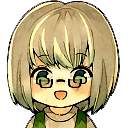 |
Today ’s guest is 人"Person”! 👏👏👏
Then, please introduce yourself, 人"Person"!
|
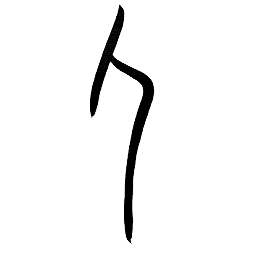 |
Nice to meet you!
My name is 人"Person".
I was born in the Yin Era of China [around 1300 BC] and turned 3,300 years old this year.
|
 |
Is that so!
So does the origin of 人"Person" become an Oracle Bone Script?
|
 |
Yes. We were discovered at the end of the 19th century in today's Anyang City, Henan Province.
Yinxu (Ruins of Yin) in Anyang is a World Heritage site!
If you like, please come and visit!
|
 |
Is it a World Heritage site? I really want to go there once.
By the way, why were you born like this?
You are different from the current Kanji for 人"Person".
楷書(Kaisho)
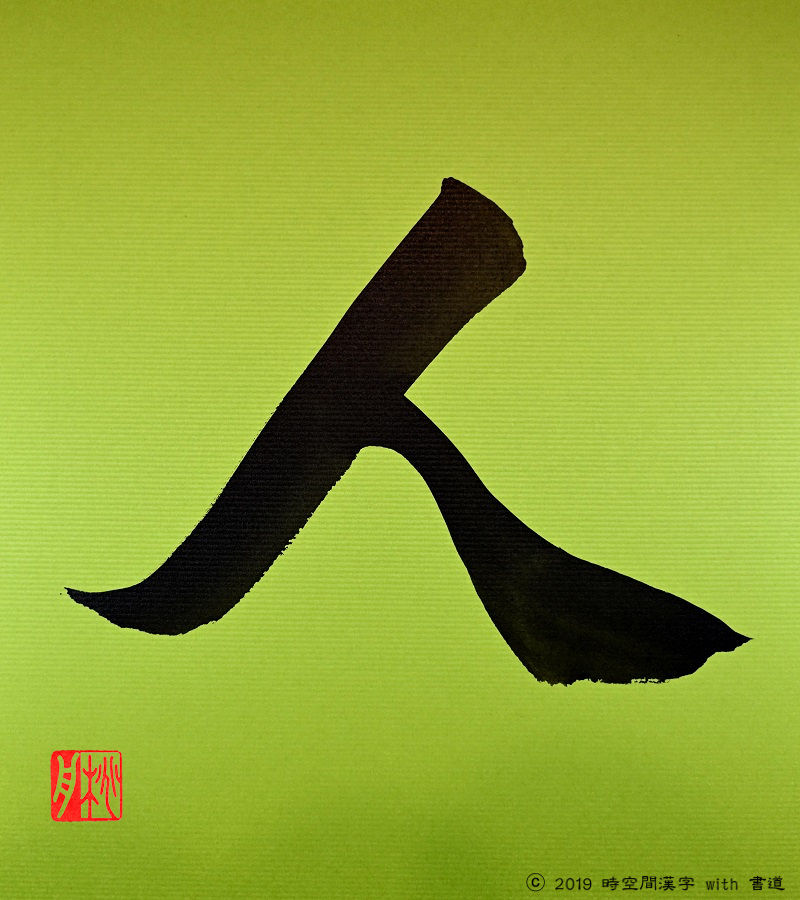
行書(Gyosho)
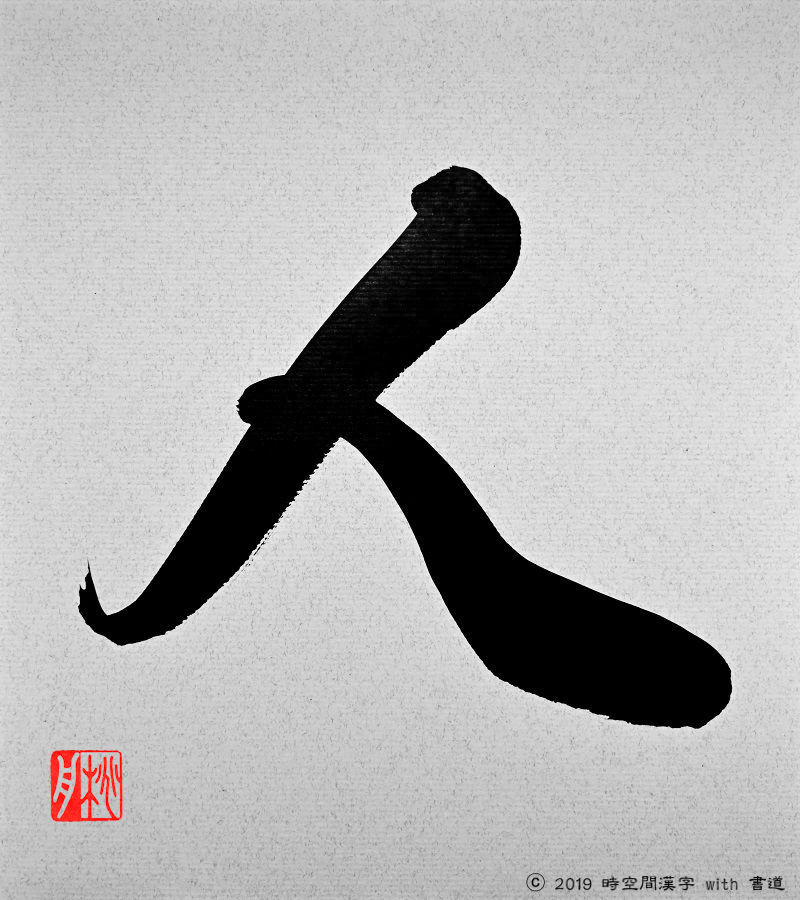
|
 |
Take a good look at my shape.
If you look at it carefully, doesn't it look like you see a person from the side?
↓ ↓ ↓ Like this.
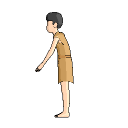
|
 |
Now that you mention it, that's true!
|
 |
I'm the one who made the shape of a human seen from the side into character!
Well, I have a slight stoop. lol
|
 |
Haha, indeed.
Are there any other features?
|
 |
I guess I can write with two brush strokes [2 strokes].
|
 |
Is there anything good if we can write with two brush strokes?
|
 |
When writing 人“Person” in Egyptian hieroglyphs of the same ancient character, write the outline of the whole body (head, torso, limbs).

↑↑ It is written like this picture, but these complicated characters are difficult to combine, so they are no longer used and phonetic characters like the alphabet are used. However, Kanji does not describe the entire outline of the body, the first stroke represents the head and hands, and the second stroke represents the torso and legs. By being composed of simple lines, it became easier to combine with other characters, and various Kanji were born.
So, it can be said that the ability to write with these two strokes led to the subsequent development of Kanji!
|
 |
I see. Certainly anyone can write the Kanji 人"Person" immediately, and it seems to be compatible with other characters.
|
 |
Yes. Because it is easy, many Kanji are born from me, 人"Person". And in fact, I have made a significant contribution to the development of another 'something'.
What do you think? It's really related to Toshu-san!
|
 |
.... Maybe is it a 書"calligraphy"? ?
|
 |
DING DONG!
I think that the culture of 書"calligraphy" was born and developed so far, because it was possible to give meaning to characters by combining simple lines instead of complex shapes like hieroglyphs.
|
 |
I see. The 書"calligraphy" comes from the 人"Person". Thank you!!
|
 |
I will be shy by your words.
|
 |
By the way, do you have any special skills?
|
 |
Hmmm...I guess that I can turn left or right.
甲骨文字(Oracle Bone Script : Left)
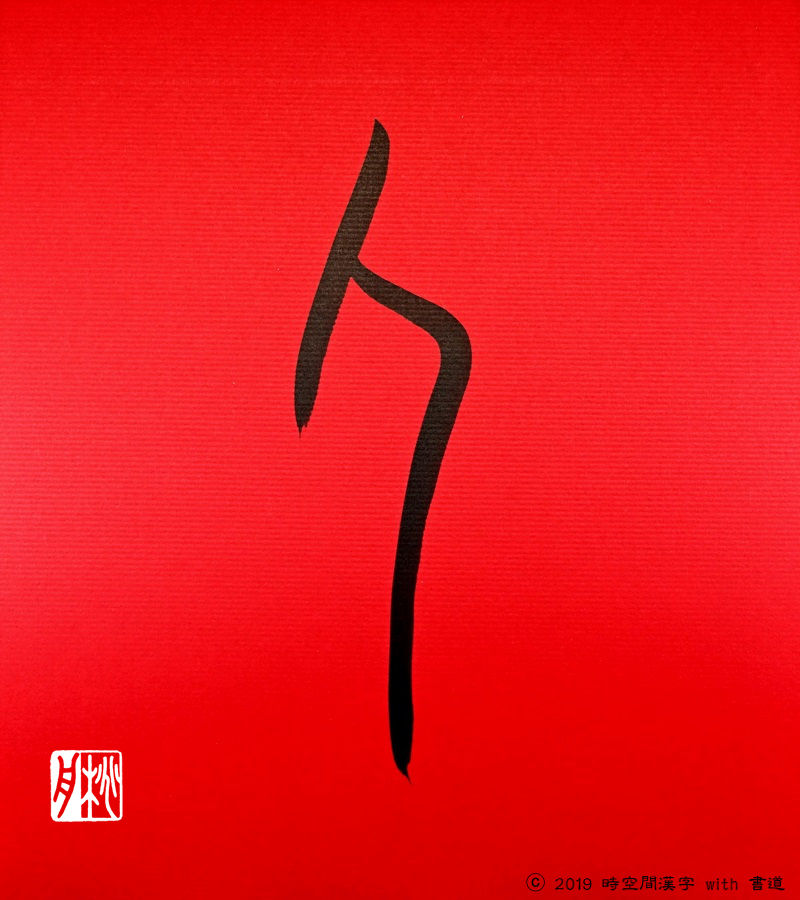
甲骨文字(Oracle Bone Script : Right)

But if you look me straight ahead, you will get a different Kanji, so I will introduce it on another occasion!
|
 |
It ’s amazing you can turn both sides!
|
 |
Thank you very much. However, facing the right is the Oracle Bone Script at the time of birth, and the character (typeface) of the era after the form of Bronze Script is facing the left.
金文(Bronze Script)

After that, it changed to a shape like this in the form of Shoten.
小篆(Shoten)
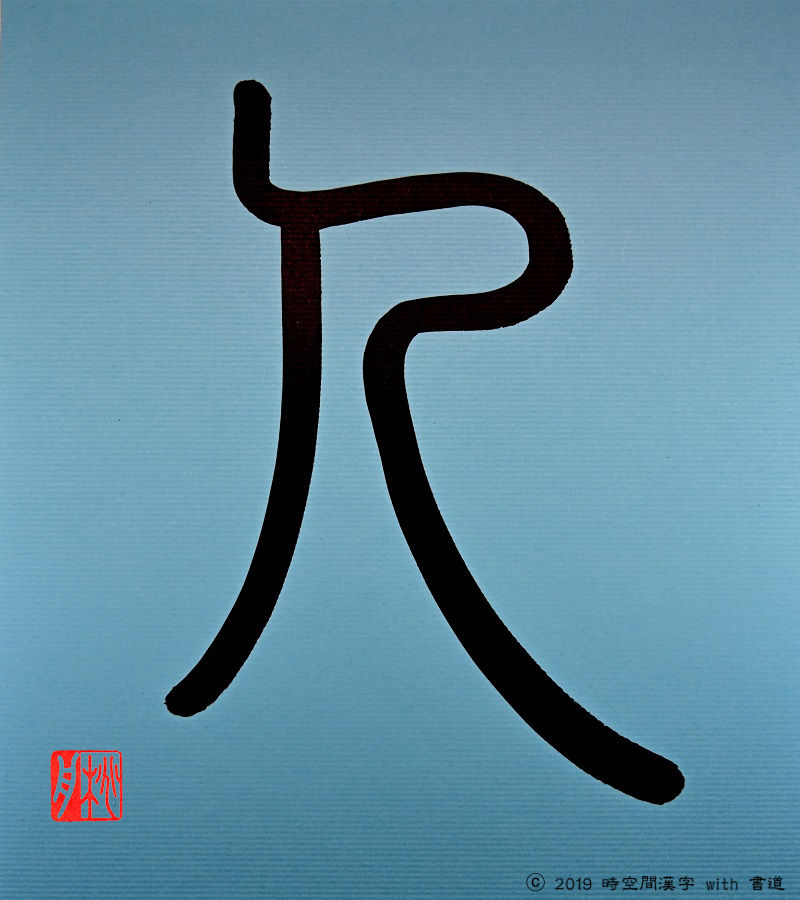
From the form of Reisho, it is similar to that of 人"Person".
隷書(Reisho)
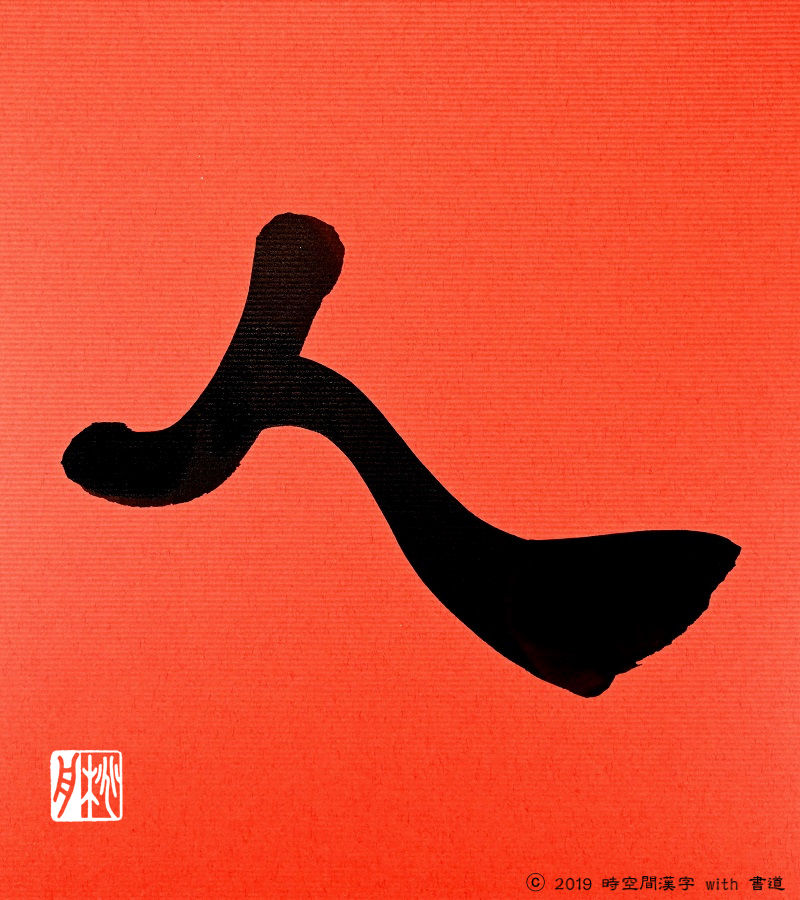
|
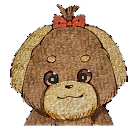 |
Ladies and gentlemen, Leciel will now explain the five typefaces in 書道(Shodo-Calligraphy), Bow-Wow!
Kanji are indispensable for 書(Shodo-works), Bow-Wow!
If the writer is an artist, Kanji is just what is expressed.
The Kanji used in the expression includes the thoughts of people who lived in each period, the history, culture and trends of each era.
Over the past 3,300 years or so, it has been transformed into the forms of Kanji that is used today.
These Kanji are roughly classified into 5 shapes(typefaces).
I've put the first guest 人"Person" in a table, so I want everyone to see it, Ruff-Ruff!
甲骨文字"Oracle Bone Script", 金文"Bronze Script", and 小篆"Shoten" introduced by 人"Person" are all 篆書"Tensho".
| 篆書(Tensho) |
隷書(Reisho) |
草書(Sosho) |
行書(Gyosho) |
楷書(Kaisho) |
| 甲骨文字(Oracle Bone Script) |
金文(Bronz Script) |
小篆(Shoten) |
 |
 |
 |
 |
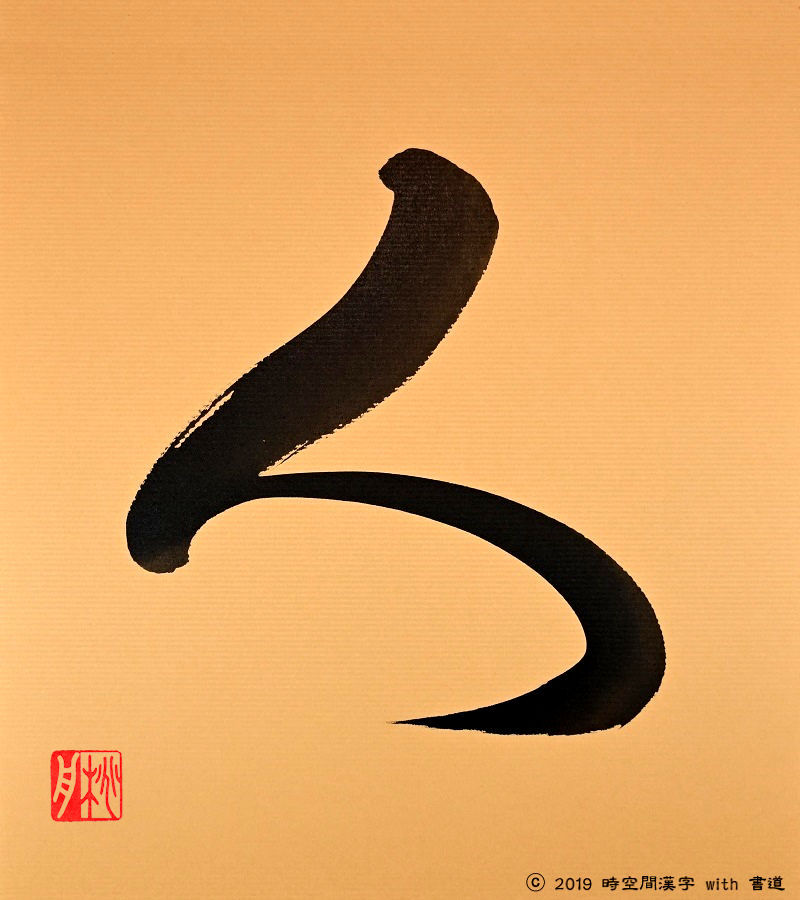 |
 |
 |
|
 |
Thank you, Leciel!
It changed from Reisho to the form of characters we are familiar with now.
I think it is a proof that the Chinese character 人"Person" has continued to live beyond time and space.
|
 |
That's right. I can transform into many different shapes and it is very fun. (^^♪
|
 |
I have always thought that the origin of Kanji 人"Person" was made up of two people, just like the famous line by Kinpachi-sensei in the Japanese TV drama, ”The character 人"person" means "a person" and "a person" support each other...”
However, when I learned that the true origin of 人"Person" is the appearance of standing alone, I was deeply moved that there are various ways of thinking depending on the time and people's interpretation.
Then, last but not least, please introduce your friends!
I would like to see the Kanji born from you, 人"Person".
|
 |
So for the next guest...
I would like to introduce 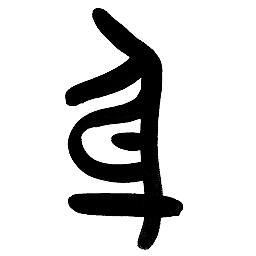 ! !
|
 |
Wow! What kind of modern Kanji does this represent?
Give me a little hint!
|
 |
Yes, this Kanji represents the path that all people who read Toshu's Kanji House must pass through.
|
 |
Oh, the figure of  is the road that all 7 billion people pass through, isn't it? is the road that all 7 billion people pass through, isn't it?
Who he is? I'm looking forward to having him!
Everyone, let's think about the next guest.
The correct answer will be introduced in the next "Toshu's Kanji House"!
Look forward to it, everyone!
|
 |
Thank you, 人"Person"!
Here's a table of 人"Person's" profiles.
So I would like you to see it, Bow-Wow!
This is Toshu's Kanji House 2nd, Bow-Wow!
|































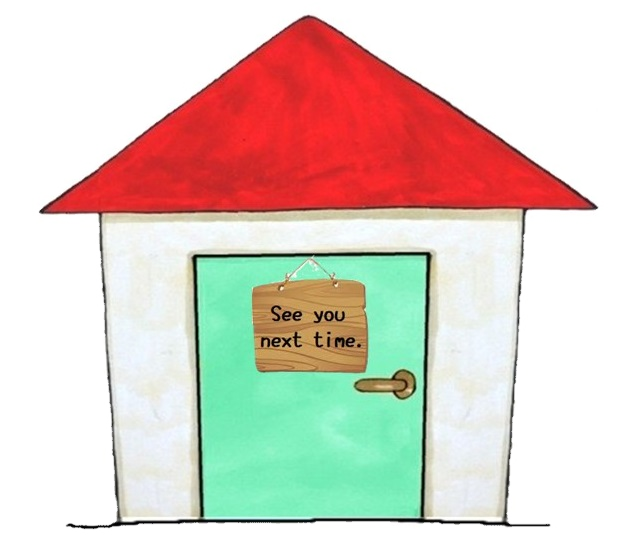










 !
!